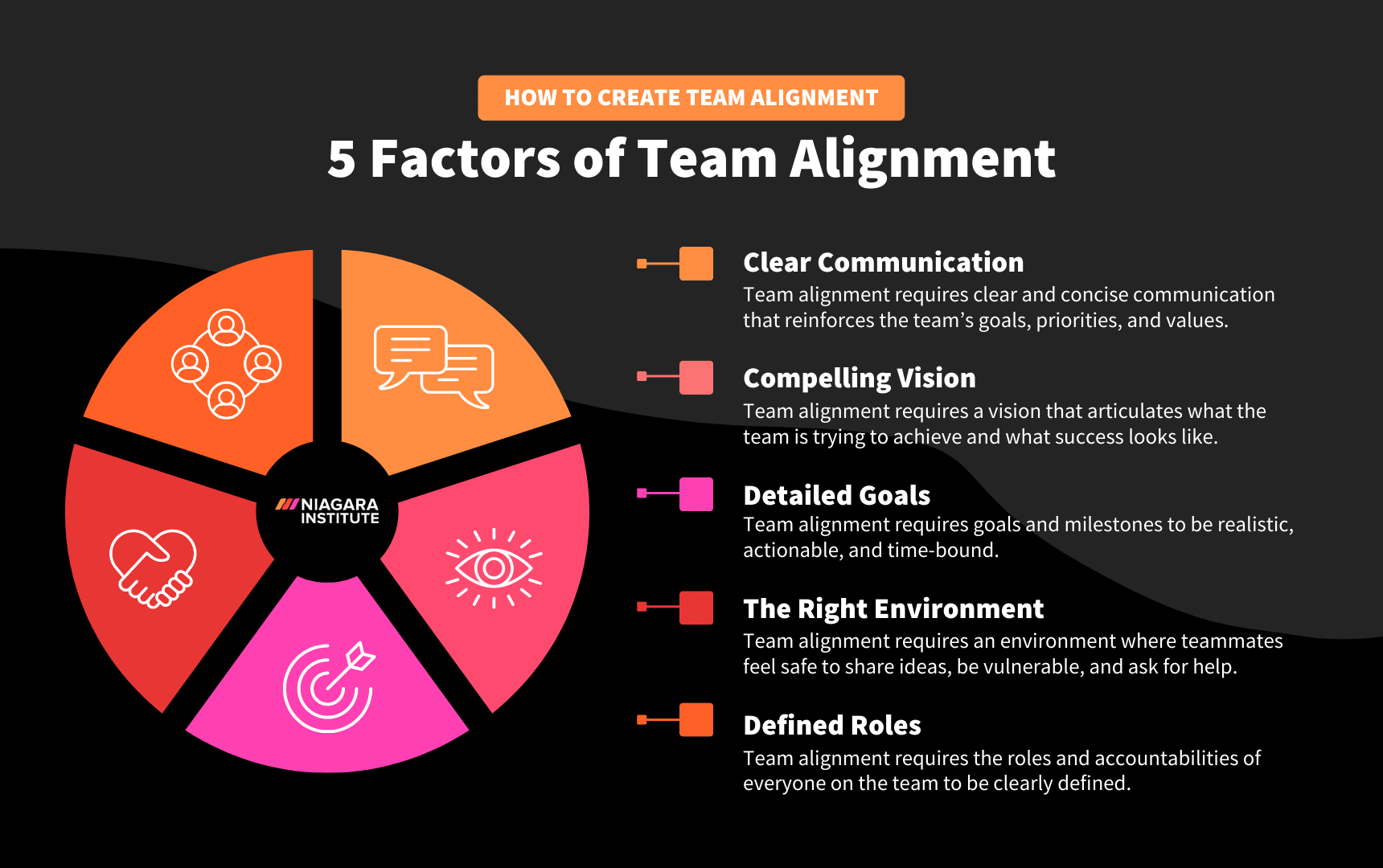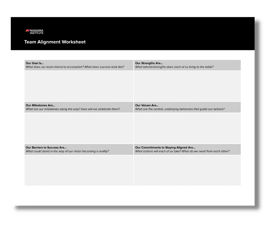13 min read
10 Free Team Leadership Tools We Love
The best teams are aligned, focused, collaborative, and communicate frequently. For those in team leadership roles, leveraging online tools is the...
4 min read
 Michelle Bennett
:
Jul 11, 2023 5:00:00 AM
Michelle Bennett
:
Jul 11, 2023 5:00:00 AM

Leading a team can sometimes feel like herding feral cats when trying to get everyone focused on the same mission, aligned on priorities, and moving forward in the same direction. However, the issue typically isn’t team members not working hard and getting tasks completed; the challenge lies in getting team members to do the right tasks that propel the team forward to achieving its goals and mandate.
For this reason, it is critically important to regularly realign your team around what really matters, which can be accomplished by hosting a team building workshop where you lead your team through an alignment activity. In this blog, we will explore why team alignment is essential, how to create it, and how to host a team alignment meeting.
Team alignment is when all team members and their leader align their priorities, resources, team vision, values, and practices to achieve a common goal together. Teams with high alignment often also experience higher levels of collaboration, connection, trust, and team cohesion, as everyone is driven, focused, and determined to achieve the same outcome, making team alignment an important factor and predictor of team success.

There is a simple yet powerful factor for teams to be aligned and can reach their full potential, and that factor is clarity. Individuals need clarity on the organization's goals, priorities, and objectives, how their team and individual contributions impact it, and the roles and accountabilities their peers have to make decisions on what they do and where they spend their time. Below are the five factors that drive clarity and must be met for team alignment to take root.

If the secret to team alignment is clarity, your team will need clear, concise, and continuous communication from you to understand and reinforce the team’s goals, priorities, and values, which, debatably, is the most critical pillar. In addition, as your team is on the journey together toward goal achievement, you’ll also need frequent communication to stay connected and aligned and overcome barriers as they arise.
Team alignment thrives when there is a compelling picture of what you’re trying to achieve and why, and one that is so clear it would live on even if you’re not the leader. As defined by the Niagara Institute, a team vision is “A clear articulation of a future state you’re trying to achieve. It describes what you intend to be and how you will make that future a reality.” This common purpose keeps the team moving forward and together through thick and thin.
Making a vision reality requires it to be grounded in realistic and actionable goals and milestones. Goals should be broken down into short and long-term ones, where each goal has subsections that outline the activities and tasks that need to be accomplished.
Alignment won’t happen if there is infighting and mistrust in the team. For collaboration to thrive where team members pick each other up to achieve the mission, the team environment must be one where teammates feel safe to share ideas, be vulnerable, and tap into their peers for help.
When individuals understand their roles, strengths, accountabilities, and those of their peers, it makes it easier for the collective team to know how each person contributes to attaining the vision and how it all fits together.
To kick off the process of moving your team in the same direction and provide them with the clarity they need to make the right decisions, you’ll want to host a team alignment meeting. Here are the steps to hosting a team alignment workshop and the template to work through with your team.
First, you must prepare to host a team alignment workshop by ensuring you’re clear on all the factors of team alignment and have all associated materials ready. If any elements below are unclear, prepare them beforehand and present them in your team-building workshop.
Team Goals and the Connection to Corporate Goals
If you need to establish or refine your team’s goals, the Professional Goals Workbook will walk you through the steps of goal setting and creating milestones with editable goal-setting templates.
Role Clarity and Playing to Strengths
If these questions are unclear, use the time in the team building workshop to clarify roles, discuss individual strengths and accountabilities, and connect how each team member's efforts impact the team and the organization’s goals.
Team Values
Before the team alignment meeting, it is essential to be prepared to discuss creating the right environment so team alignment can thrive. By definition, team culture is the “totality of behaviors on the team and can be witnessed in the way they think, act, collaborate and interact with each other.” Given this, you will want to be ready to discuss the behaviors that need to change and the ones that need to be added to create the right environment for better alignment. If you’re unsure how to do this, our quick start article on culture change and the corresponding team culture toolkit can help you.
Communication and Connection
Compile your thoughts and ideas on ways the team can stay connected and provide each other with frequent updates. Before the meeting, evaluate if you have the right tools and processes and if any new resources are needed.
To set the stage so your team is bought-in to better team alignment, you should start by discussing the objectives of the team building workshop and the benefits of a better-aligned team. In addition, you’ll want to set meeting ground rules, outline your desired outcomes from the meeting, and introduce the team alignment activity they will use.
 The Team Alignment Map (TAM) is an editable worksheet to work through as a team as you collaborate to come to a consensus on each critical team alignment factor, discuss important issues, and share in an experience of developing greater team alignment. You’ll want to take on a meeting facilitator role during the activity, where you help guide the conversation and provide expert advice and resources you prepared before the meeting. Doing so will enable greater buy-in and support for being more aligned, as your team will have the opportunity to collaborate and generate their own conclusions and recommendations.
The Team Alignment Map (TAM) is an editable worksheet to work through as a team as you collaborate to come to a consensus on each critical team alignment factor, discuss important issues, and share in an experience of developing greater team alignment. You’ll want to take on a meeting facilitator role during the activity, where you help guide the conversation and provide expert advice and resources you prepared before the meeting. Doing so will enable greater buy-in and support for being more aligned, as your team will have the opportunity to collaborate and generate their own conclusions and recommendations.
For team alignment to be something your team pursues and doesn't become another initiative that is quickly forgotten, you will want to send a follow-up email that outlines the decisions made, expectations, next steps, and action items agreed to in the meeting.

13 min read
The best teams are aligned, focused, collaborative, and communicate frequently. For those in team leadership roles, leveraging online tools is the...

6 min read
It’s challenging to get any initiative off the ground or project completed without some degree of team effort. Compared to the past, employees are...

5 min read
As the saying goes, “You only have one chance to make a first impression,” and the first few days of work for a new team member sets the tone for...